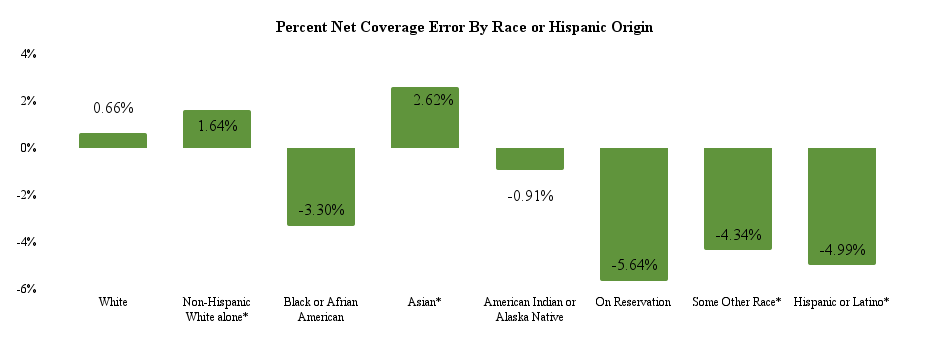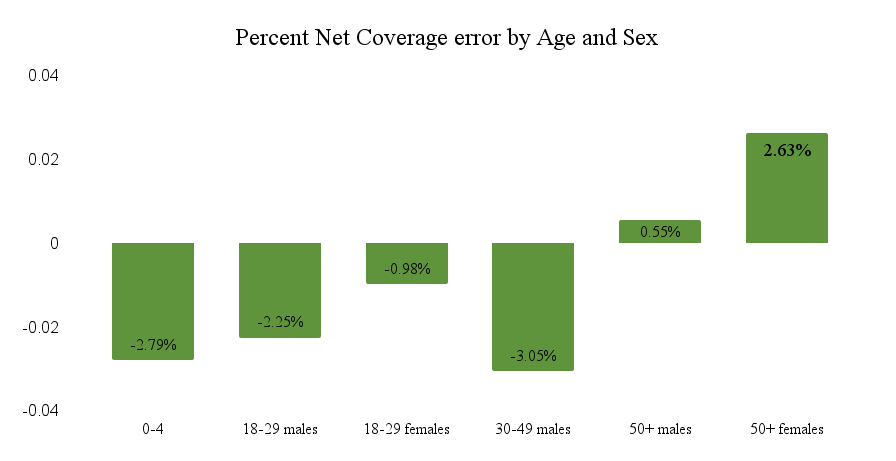Changes to the Census: What it Means to Researchers and Policy Makers
At rbouvier consulting, we understand how vital Census data is at all levels of society. Not only is decennial Census data used to appropriate seats in the US House of Representatives, state governments, and allocate billions of dollars in federal funding, it’s also vital data used in research across the country that supports both public and private decision making.
Which is why we’re concerned about changes to the 2022 Census and what it might mean for researchers and policy makers alike.
Challenges of the 2020 Census
The 2020 Decennial Census was set to face unprecedented challenges even before the COVID-19 pandemic hit. In 2019, Kenneth Prewitt, a Carnegie Professor of Public Affairs and the Special Advisor to the President at Columbia University, spoke out about the 2020 Census and the issues it was expected to face. He addressed the major challenges the decennial census has faced throughout history and the nuanced challenges of the 2020 decennial census.1
Since its inception, the census has consistently faced two major challenges: operational issues and partisan interference. Budget constraints and public distrust in the period prior to the COVID-19 pandemic added to those difficulties for the 2020 census.
The US Census Bureau’s advertising budget for the 2000 and 2010 Censuses was dramatically boosted as a result of the concerningly high and rising non-response rates in the 1990 Census. Due to the success of the Bureau’s advertising activities and the country’s population growth, another budget rise for the 2020 Census was anticipated. Congress, however, decided against approving a budget increase for the 2020 Census. The Census Bureau did manage to offset at least part of its budget constraints by allowing able households to fill out the Census online. It also used administrative records to fill in gaps when respondents choose not to answer certain questions, helping to avoid costly in-person follow-ups to these respondents’ homes. The use of administrative records, however, posed another operational issue to the Bureau: public distrust and privacy concerns, which were more difficult to manage.
Unsurprisingly, the outset of the pandemic brought about additional operational issues as concerns over health and safety halted all in-person operations. When in-person field operations did resume, the country was experiencing multiple hurricanes and deadly wildfires, and the Census Bureau struggled to find in-field staff due to public health concerns. Additionally, the country saw a mass number of people that were forced to relocate due to both the pandemic and multiple natural disasters, impacting the public’s ability to participate in the Census and the Bureau’s ability to reach certain households. There were a number of actions the Bureau took to mitigate these challenges, such as encouraging online responses and extending in-field operations by two months.2
Partisan interference is a long-standing tradition of the Census, and the 2020 Census was no exception. Interference in the 2020 Census came in the form of a directive from the Trump Administration to add a citizenship question to the 2020 Census form. The Administration claimed that the directive would assist the US Department of Justice in applying the Voting Rights Act. The directive went against the recommendation of the Census Bureau and sparked a fierce debate. The Bureau held that the question would both increase costs and result in a significant increase in non-response rates about immigrants and non-citizen households. It was expected that, if this question were to be added to the 2020 Census form, major cities with large immigrant populations could lose up to billions in federal funding. Many also feared the addition of a citizenship question would have significant implications for both disaster relief funding and disaster planning. Without an accurate count of the population, planners and emergency responders would struggle with both identifying vulnerable populations and effectively allocating resources. The Trump Administration did ultimately drop its efforts to add a citizenship question due to legal challenges, however, it is possible that the Administration’s efforts had lasting effects on the public’s view of the Census. The heated political debate both increased public concerns about the use of the Census as a government surveillance tool, as well as throwing the topic of the Census into a fiercely politically polarized debate.
Quality of the 2020 Census
In March of 2022, the Census Bureau released the results of its analyses of the quality of the 2020 Census. The Census conducts two analyses, a Post-Enumeration Survey (PES) and a Demographic Analysis (DA). Both of these analyses estimate the accuracy with which the Census has counted the nation’s population and population groups. The PES uses a sample survey to estimate the population size while the DA uses vital records and other types of data.
Nationally, only 0.24% of the entire population was missed in 2020. Some states, however, experienced higher miscounts than others. The map below shows which states had undercounts and overcounts. Six states had undercounts, including Arkansas, Florida, Illinois, Mississippi, Tennessee, and Texas. Arkansas and Tennessee had approximately 5% of their populations missed, about 1 in 20 residents, and undercounts in Florida and Texas cost the state’s congressional seats.3 States that were overcounted include Delaware, Hawaii, Massachusetts, Minnesota, New York, Ohio, Rhode Island, and Utah. Overcounts in Minnesota and Rhode Island have appeared to have gained the states congressional representatives.
Certain demographic groups were also undercounted and overcounted. By race or Hispanic origin, the Census undercounted those who self-reported as Black, Hispanic or Latino, American Indian or Alaska Native, and “some other race” American Indians or Alaska Natives living on reservations were undercounted at the highest rate. Racial groups that were overcounted include those that reported as non-Hispanic white alone and Asian. When compared with the 2010 Census, groups that were undercounted or overcounted at statistically significant rates include non-Hispanic white alone, black, Asian, some other race, and Hispanic or Latino.

By age and sex, those 50 years and over were overcounted. Children aged 0 to 4, both males and females aged 18 to 29, and males 30 to 49 were undercounted.

Additionally, homeowners were overcounted in the 2020 Census by 0.42%, while renters were undercounted by 1.5%.
Many researchers, including us at rbouvier consulting, rely on Census data for accurate information regarding the sociodemographic characteristics of the region we study. While any undertaking as large as the Census is bound to have its issues (and the Census has attempted to rectify some of its prior errors), it is unsettling to see traditionally underrepresented groups continue to be underrepresented. This concern is compounded when we consider “differential privacy,” a practice by which the Census Bureau attempts to preserve the anonymity of residents from small geographic areas, a topic of one of our upcoming blog posts. The decennial Census is one of the best and most reliable sources of sociodemographic statistics we have. Nonetheless, it is worth “ground truthing” it with local results wherever possible.
References
1Prewitt, K. (2019). The 2020 Census: Unprecedented Challenges & Their Implications. American Academy of Arts & Sciences. https://www.amacad.org/news/2020-census-challenges-implications, retrieved on May 19, 2022.
2Jennifer Reichert & Dale Kelly. (2021, March 1). Adapting Field Operations to Meet Unprecedented Challenges. United States Census Bureau. https://www.census.gov/newsroom/blogs/random-samplings/2021/03/unprecedented-challenges.htmll
3Mike Schneider & Associated Press. (2022, May 19). In 2 states, 1 in 20 residents were missed during U.S. Census. PBS News Hour. https://www.pbs.org/newshour/politics/in-2-states-1-in-20-residents-were-missed-during-u-s-census
4,5 United States Census Bureau. (2022, March 10). Census Bureau Releases Estimates of Undercount and Overcount in the 2020 Census [Government]. Census.Gov. https://www.census.gov/newsroom/press-releases/2022/2020-census-estimates-of-undercount-and-overcount.html#:~:text=The%20PES%20found%20that%20the,not%20statistically%20different%20from%20zero
Blog post by – Averi Varney